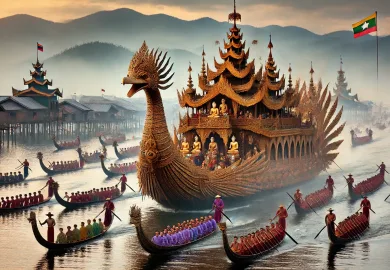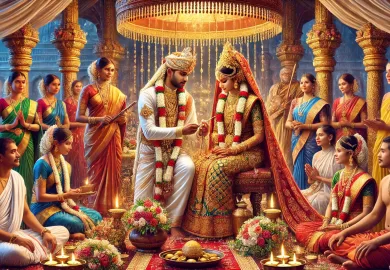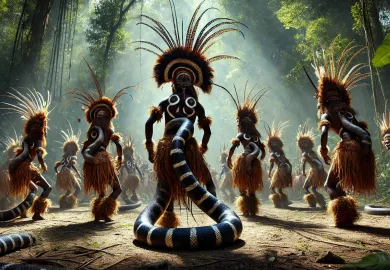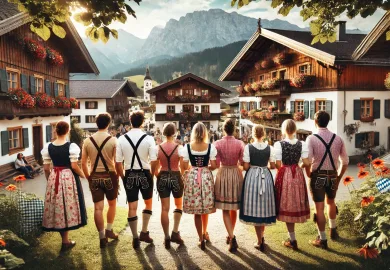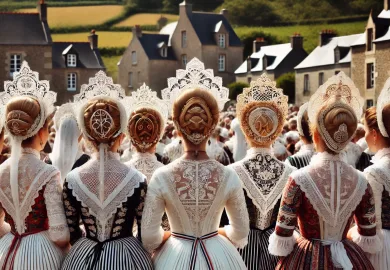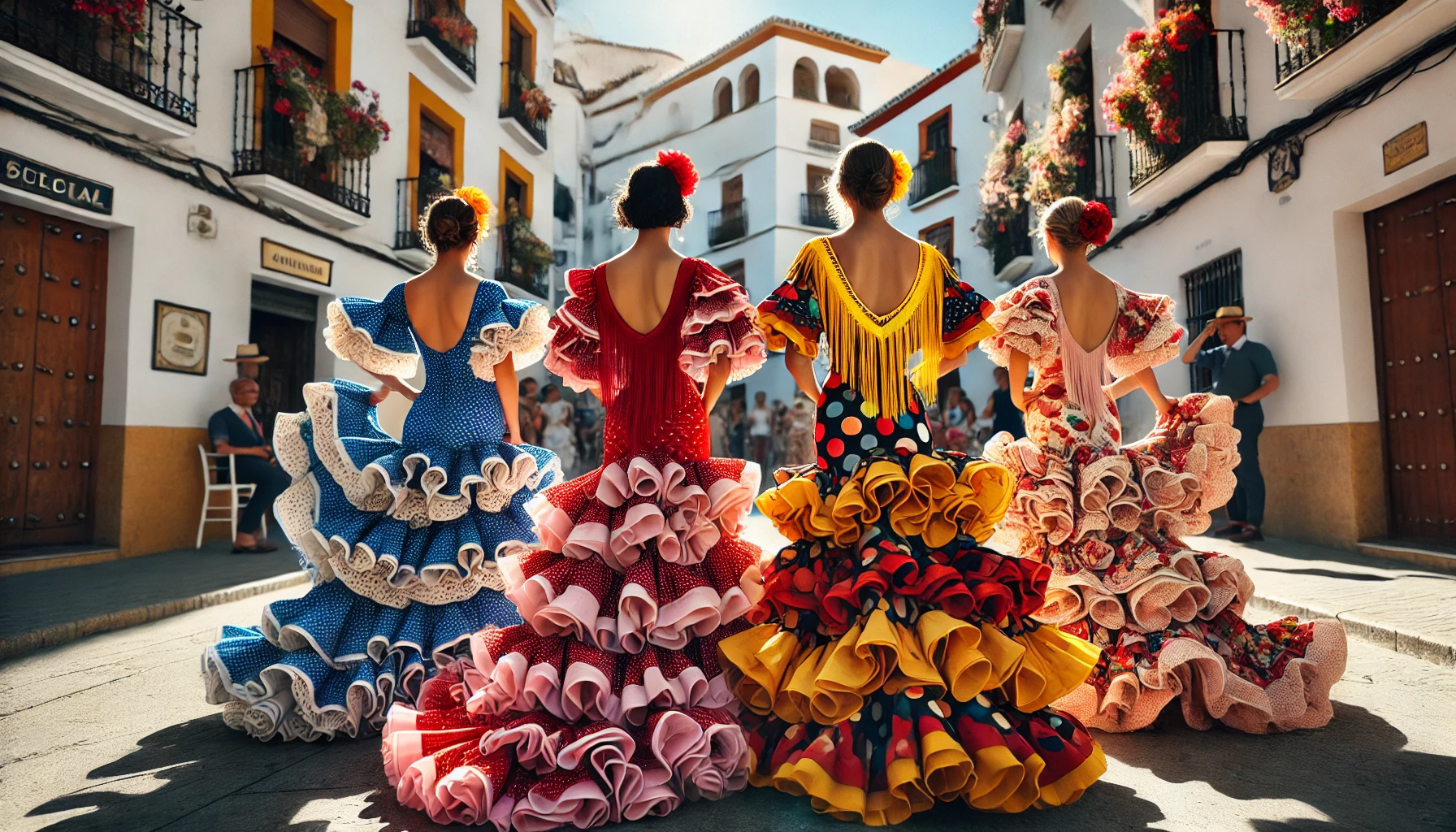
Flamenco, one of Spain’s most iconic cultural expressions, is more than just music and dance. It’s an art form that encompasses emotion, passion, and a deeply rooted tradition, particularly in Andalucía, the southern region where Flamenco was born. An essential part of Flamenco culture is the traditional attire, especially the Flamenco dress or traje de flamenca, which has evolved into a symbol of Andalusian identity. In this article, we will explore the history, styles, and significance of Flamenco dresses in Andalucía, offering insight into why these vibrant garments continue to captivate both locals and visitors alike.
The Origins of Flamenco Dresses: A Reflection of Andalusian Heritage
Flamenco dresses, also known as trajes de flamenca or trajes de gitana, have a rich history that is deeply intertwined with the cultural tapestry of Andalucía. The roots of the Flamenco dress can be traced back to the late 19th century, when the Romani women (gitanas) in Andalucía began wearing colorful, ruffled dresses at local fairs. These dresses, initially considered humble attire, quickly evolved into a distinctive and elegant style that is now recognized worldwide.
During the early years, the Flamenco dress was worn primarily at the fairs, especially the Feria de Abril in Seville, which is one of Spain’s most famous and culturally significant festivals. Over time, what started as a modest outfit for working-class women blossomed into a sophisticated and highly stylized garment, with intricate designs and embellishments. The dress became a key element of Flamenco performances, representing not only the vibrancy of the dance but also the fiery spirit of Andalucía itself.
The transformation of the Flamenco dress was greatly influenced by the rise of Flamenco as a popular art form. As Flamenco gained recognition, particularly during the early 20th century, the dresses worn by dancers and performers became more elaborate, featuring intricate lacework, ruffles, and vibrant colors that reflected the passionate energy of the dance. Today, Flamenco dresses are not only a vital component of traditional performances but are also a symbol of Andalusian pride and identity.
The Unique Features of Flamenco Dresses: Ruffles, Colors, and Tailored Elegance
One of the most striking features of traditional Flamenco dresses is their characteristic ruffles, or volantes, which adorn the sleeves, skirt, and sometimes even the neckline. These ruffles give the dress a dynamic movement, mirroring the graceful yet intense motions of Flamenco dancers as they twirl, stomp, and sway to the rhythm of the guitar. The voluminous layers add a sense of drama and flair, making the Flamenco dress an unmistakable symbol of the art form.
In addition to the ruffles, the color palette of Flamenco dresses is another defining aspect. The dresses often come in bold, eye-catching colors such as deep reds, bright yellows, vibrant blues, and rich greens. Polka dots, or lunares, are another popular pattern, adding a playful and whimsical touch to the otherwise dramatic attire. The color and pattern choices are not merely aesthetic; they are also a reflection of the wearer’s personality and the mood they wish to convey during their performance.
The tailored silhouette of the Flamenco dress is also worth noting. These dresses are typically fitted at the torso, emphasizing the curves of the wearer and then flaring out dramatically at the hips or lower, creating a mermaid-like shape. This design not only flatters the body but also allows for freedom of movement, enabling dancers to perform the intricate footwork and expressive arm gestures that are central to Flamenco.
Over time, modern interpretations of Flamenco dresses have emerged, incorporating new fabrics, styles, and embellishments. However, the traditional elements of ruffles, vibrant colors, and form-fitting designs remain at the heart of these garments, preserving their cultural significance and timeless appeal.
The Cultural Significance of Flamenco Dresses in Andalucía
Flamenco dresses hold a special place in Andalusian culture, symbolizing the region’s deep-rooted traditions, history, and sense of identity. To the people of Andalucía, the Flamenco dress is not just a costume; it is an embodiment of their passion, pride, and connection to the land. These dresses are often worn during local festivals, fairs, and religious celebrations, where they serve as a visual representation of Andalusian culture.
The Feria de Abril in Seville is perhaps the most famous event where Flamenco dresses take center stage. During this annual spring fair, women and girls don their finest Flamenco dresses, transforming the streets into a sea of color and movement. The fair is a time for the community to come together, celebrating Andalusian heritage through dance, music, and, of course, fashion. Many women even have multiple Flamenco dresses, each carefully crafted and chosen for different occasions throughout the week-long festivities.
Beyond Seville, Flamenco dresses are worn at other regional fairs and events, such as the Feria de Córdoba, Feria de Málaga, and the Rocío pilgrimage. Each event showcases the unique regional variations of Flamenco attire, with some areas favoring certain colors, patterns, or designs over others. Despite these differences, the essence of the Flamenco dress remains consistent: it is a celebration of Andalusian beauty, femininity, and resilience.
The significance of Flamenco dresses extends beyond the local community. Internationally, these garments have become a symbol of Spain’s cultural heritage, drawing admiration from fashion enthusiasts and tourists alike. Many fashion designers have even been inspired by Flamenco dresses, incorporating elements of their design into high-fashion collections, thereby contributing to the global appeal of this traditional attire.
How Flamenco Dresses Are Made: Craftsmanship and Tradition
The process of creating a traditional Flamenco dress is an art in itself, requiring skill, craftsmanship, and attention to detail. These dresses are often handmade by experienced seamstresses, known as modistas, who have honed their craft over generations. The production of a Flamenco dress can take several weeks, as each element— from the ruffles to the lace details—must be meticulously sewn and fitted to the wearer’s body.
One of the most important aspects of Flamenco dressmaking is the fabric. Traditionally, these dresses were made from cotton or linen, but modern versions may use silk, satin, or even more contemporary materials such as polyester blends. The choice of fabric is crucial, as it determines the movement of the dress, its comfort, and its overall appearance. For example, lighter fabrics such as silk create a more fluid, ethereal movement, while heavier materials like cotton provide structure and volume.
In addition to the fabric, embellishments such as lace, embroidery, and fringe are often added to enhance the visual appeal of the dress. These details not only add a touch of elegance but also reflect the personal style of the wearer. Some dresses feature intricate hand-embroidered motifs or lace inserts, showcasing the high level of craftsmanship involved in their creation.
Once the fabric and design are chosen, the dress is carefully tailored to fit the body. The traditional Flamenco dress is form-fitting, hugging the torso and hips before flaring out into dramatic ruffles at the lower half. This design requires precise measurements and adjustments to ensure the dress fits perfectly and allows the wearer to move freely while dancing.
In modern times, Flamenco dressmaking has evolved to include contemporary styles and designs, but the traditional techniques and attention to detail remain a hallmark of this craft. Whether worn for a performance, a festival, or simply as a celebration of Andalusian culture, the Flamenco dress is a testament to the skill and artistry of those who create it.
The Evolution of Flamenco Dresses: From Tradition to Modernity
While the traditional Flamenco dress remains iconic, its evolution over time reflects changes in both fashion and cultural dynamics. In the past, Flamenco dresses were typically handmade by local artisans, with each one reflecting the personal style and preferences of the wearer. However, as fashion trends have evolved, so too have Flamenco dresses, incorporating modern elements while retaining their traditional roots.
One of the most notable changes in Flamenco fashion is the introduction of contemporary fabrics and design elements. While traditional dresses were primarily made from natural materials like cotton and linen, modern Flamenco dresses may incorporate a range of synthetic fabrics, such as polyester, that offer more flexibility and durability. In addition, newer styles may feature more streamlined silhouettes, offering a sleeker and more modern look while maintaining the signature ruffles and form-fitting bodice.
Another significant change is the influence of high fashion on Flamenco dress design. Designers have begun to experiment with bold, avant-garde interpretations of the traditional Flamenco dress, blending elements of haute couture with classic Andalusian style. For example, some modern Flamenco dresses may feature asymmetrical designs, bold color-blocking, or unexpected materials like leather or sequins, bringing a contemporary flair to the traditional garment.
Despite these innovations, the core elements of the Flamenco dress—its ruffles, form-fitting silhouette, and vibrant colors—remain essential. Modern interpretations of the dress pay homage to these traditions while offering new and exciting ways to express individuality and creativity through fashion. This balance between tradition and modernity allows the Flamenco dress to remain relevant in both local Andalusian culture and the global fashion scene.
Ultimately, the evolution of Flamenco dresses reflects the dynamic nature of Flamenco culture itself. Just as the music and dance have adapted to new influences over time, so too has the attire, ensuring that the Flamenco dress remains an enduring symbol of beauty, passion, and cultural pride in Andalucía.

